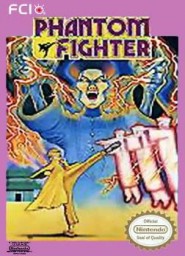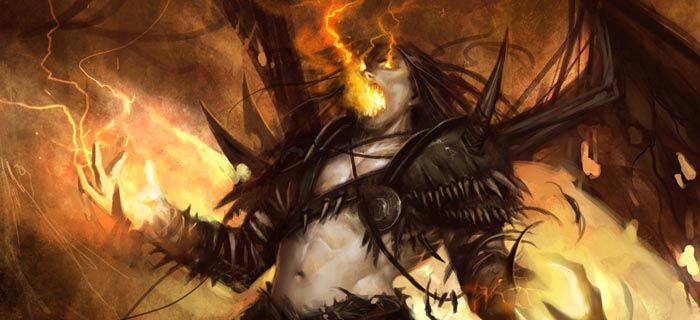Come Back at Me, Bro! A look at comeback mechanics
Comeback mechanics have been a part of competitive games for a long while now. They serve to give losing players a fighting chance at winning. On paper, this sounds like a really, really good idea. Why not give the person who’s behind a little extra oomph to get back into the competition? After all, people love underdog turnaround victories, as evidenced by every coming-of-age action film ever made. Such mechanisms have the potential to make things more exciting both for the players and for the audience, and could even flatten out player skill difference a bit, which in some cases is a good thing.
However, while this all looks great on paper, comeback mechanics rarely work out perfectly in practice, often completely breaking serious competitive games from a mechanical standpoint. That’s not to say they’re all like this. Some of them do serve to make the games better and more intense. But let’s take a closer, more informative look, shall we?
Probably one of the first noticeable series to feature a comeback mechanic is Mario Kart. Their comeback mechanic functions in a very simple manner: the further back you are in the standings, the better the items you are likely to get. Now, Mario Kart isn’t really “competitive” in the sense that there are serious tournaments with huge cash prizes. It is competitive more in a party game sense, in that it’s absurd and fun and people like smacking each other around with things like explosions and lightning bolts. So, for this purpose, the comeback mechanic functions pretty damn well. You’re in last place? Well, 1st better watch out because he’ll probably see a Blue Spiny Shell coming his way! Did that shell knock you back to 8th? Well, just wait until you get a Lightning Bolt and speed past the competition!
Mario Kart is not a game where this sort of thing counts though. No, let’s look at these sort of mechanics in a genre ruled by mechanics, where one small balance overlook will completely screw the entire system: fighting games.
Fighting games have evolved greatly over the years, which is common knowledge. As more complicated mechanics were added to them, they originally and exclusively they favored the winning player. For example, the victor of a match of Mortal Kombat got the privilege of ripping off the opponent’s head and eating it… a satisfying, albeit aesthetic factor. Pretty soon thereafter, fighting games began adding in super moves, something that has stuck around for a long time. In Super Street Fighter II Turbo, one of the first games to feature such a mechanism, you built up your Super meter much quicker if you were on the offensive, especially if your attacks connected. If you turtled most of the match,* or if you were getting beat up and failed to counter in any significant way,** you weren’t likely to see your super move that often.
Now, the incentive to remain in the lead to maintain a large super meter still exists in most fighting games. It does its job pretty well, especially in Super Street Fighter IV, where it can provide both your character’s super combo and his or her EX moves. But recently, we’ve seen resurgence of comeback mechanics in almost every fighting game. Three recent examples, all Capcom games, have built-in systems designed to give the losing player the upper hand… or at least a dangerous hand.
- Ultra Combos (Super Street Fighter IV): This one’s pretty simple. The more damage you take, the more the meter fills. Once you’ve lost the equivalent of about half your life bar, you’ll have access to your Ultra Combo move, but it’ll only be charged to half strength. At this point, the more life you lose, the stronger the attack will be. When you’ve lost the equivalent of about 85~90% of your health, the Ultra Combo will be at full strength. Ultra meter can also be filled by absorbing temporary damage with Focus Attacks. An Ultra Combo is initiated differently by each character, and each character can choose one of two of these moves at the start of each match.
- Baroque (Tatsunoko Vs. Capcom): The Baroque system is quite different from that of Ultra Combos. When you baroque, you’ll convert whatever red (temporarily depleted) life you currently have into flashing life. This will give you an attack boost, and put you into neutral stance. The more red life you currently have, the stronger your damage bonus will be. Baroque only lasts as long as you are in a combo. If you drop the combo, you lose the state (although I have seen instances of baroque being sustained with quick enough combo resets). The drawback to using Baroque is that doing so eliminates your red life, which could be used for recovery while tagged out. Baroque is initiated by pressing any attack button + the partner button.
- X-Factor (Marvel Vs. Capcom 3): X-factor is similar to baroque because they both reset a character to neutral and give them a power boost. However, X-factor differs in that its power depends on how many characters you have left in your roster. Fewer characters equals more power, in three potential levels of capacity gained. Instead of just boosting a character’s damage output, it also makes him or her faster, increases defense and the rate at which benched characters heal. While X-factor is active, your character no longer takes chip damage and can recover red life while active. If you use a level 1 or 2 X-Factor, it will also transfer from character to character when you tag out. X-factor can only be used once per player per match, and is limited by time; it will run out when the meter reaches zero. It is initiated by hitting all four attack buttons at the same time.
Each system has pretty clear ups and downs. However, some of these mechanics pose balance concerns.
AUTHOR’S NOTE: This is my opinion, but it is the right opinion. If you disagree, then you are entitled to this and I do not fault you you are wrong.
TvC’s Baroque system is one of the most balanced comeback mechanics in any fighting game I’ve seen. It’s not terribly overpowered because you need to make a sacrifice to activate it, and it lasts only as long as you’re utilizing it. Another factor that balances out its power is the fact that any character in TvC can Mega Crash if they have at least 2 bars of meter. This essentially breaks any combo and knocks the attacker back a full screen, even if under the effects of Baroque. If your opponent initiates a Mega Crash when you activate Baroque with a lot of red life, you can kiss all of that life and extra damage goodbye.
SF4’s Ultra Combos are less balanced, but certainly not broken. Every character in the game has two ultras they can choose from before the match begins, and each ultra works differently. While there is no one ultra that breaks the game, since most of them can be easily blocked unless set up properly, some of them are clearly not as powerful as others, which is where balance issues come into play. However, that is only in the scope of viewing these moves as pure comeback potential. In reality, when you pick an Ultra Combo, you’re picking another tool your character will have to use in the match. High level players will pick a character and pick an ultra they know how to use well in certain situations. In other instances, ultras are used to tack on extra damage to combos like a Super Combo.
X-Factor, on the other hand, is fucking broken. Especially level three. Consider Exhibit A, a level three X-factor on Dark Phoenix.
I really don’t have much else to say about that. The first day I played Marvel 3, it was against someone who owned it since launch, and thanks to that combination you see in the video I was still winning matches, even given my inexperience. It was hilarious. For me, at least.
So, what’s the lesson that we can learn from all of this? One possible message is that comeback mechanics have a clear position in fighting games today, and can work well given the right circumstances. Things like sacrifice and defensive measures need to be implemented so that the entire match doesn’t ride on the comeback mechanic and who gets to use it first. However, the real message is that Capcom needs to nerf X-Factor because that shit is ridiculous.
*See: Guile.
**See: Fei Long pre-HD Remix.









While X-factor probably needs a tone-down in damage at level 3, I think its a much better mechanic than ultra combos or mega crash. Mega crash is a garbage get out of jail free card mechanic and one of the many reasons TvC is a terrible game. Ultra combos is almost purely a comeback mechanic, though I guess you can build it through absorbing hits while focus attacking. X-factor has much more offensive capabilities than the other two – its just the level 3 version (combined with a few of the harder hitting characters in the game) that make it look ridiculous. And honestly, if you have been watching any of the tournaments lately, the guy that uses x factor first usually loses.
While Ultra Combos are only a comeback mechanic, they do reward smart FA usage and essentially deter things like mindless projectile spam. My main problem with Ultra Combos is that as the map progresses, things sometimes get LESS exciting because both players are more and more afraid of how much a mistake will cost them once the opponent has a 100% Ultra stocked.
I don’t know much about Mega Crash… seems like the new Mortal Kombat will have something similar in it, though without Baroque in the game it’s not as unfair to have 1 or 2 combo breakers in a match.
Since you mentioned Phoenix, I felt obliged to put this little dandy I made here: http://www.youtube.com/watch?v=pX0NE2F01Dg
Also, this video contains what that Cpt. America SHOULD’VE done.
Crits. Nuff said.
Technically, while crits do allow comebacks, the player who is doing the most damage gets the most crits, so if anything it deters comebacks overall… right?
Some comeback mechanics reward very reckless and “scrubby” play. And in games where the better player should always win, mechanics like Ultras and X-Factor kinda alter that theory, and it can somewhat question the seriousness of a game, especially on a competitive stand-point.
That’s part of what I was going for in this article. Ultras aren’t so bad because there are clear ways to block and counter them thanks to the usually horrendous start up times if you just smash out a random ultra. But X-Factor…belgh